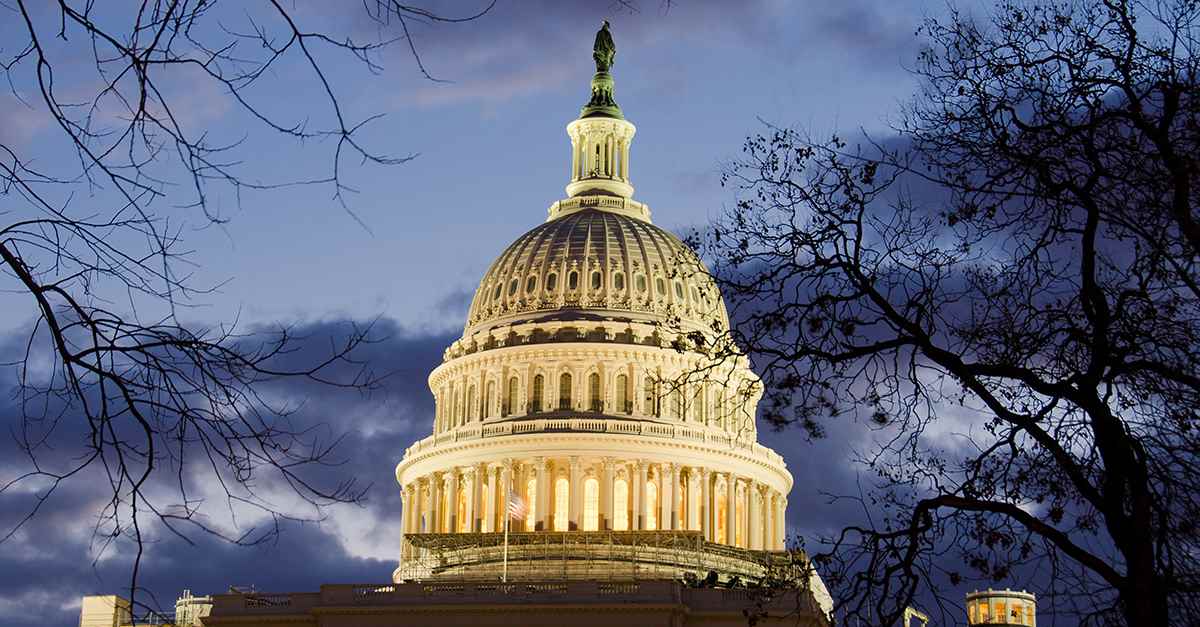By Pat Alcox, Treasury Management Product Director
Key takeaways
- A recent executive order mandates all federal payments and disbursements must shift to EFT by September 2025, leaving organizations only months to shift practices.
- The end of check float and manual remittance processes will require updates to cash management, reconciliation, and payment operations.
- Checks might be highly vulnerable to fraud, but all payment methods could be targeted. Strengthening controls around ACH and other digital payment methods is critical to managing fraud risk in a checkless environment.
- This mandate presents an opportunity for organizations to modernize their processes and enterprise-wide payment infrastructure for long-term efficiency, reduced risk, and cost savings.
Paper checks are being pushed out of the federal government payment system as a new mandate seeks to change the future of payments. A recent White House executive order requires all federal government agencies to eliminate check use by September 2025 and shift to electronic funds transfer (EFT) for all disbursements to and payments from the U. S. Department of Treasury.
While check use varies between sectors and organizations, those with low check volume or limited federal interaction shouldn’t assume they’re out of scope. As federal agencies move to EFT-only models, other government entities and industries that support them are likely to follow. Expect this shift to affect how funds are reconciled, and remittance data is shared.
While the EFT requirement will change payment interactions with the federal government, forward-looking organizations can also use this as an opportunity to modernize payment operations and improve controls.
What is the Executive Order?
The “Modernizing Payments to and From America’s Bank Account” Executive Order, which was signed on March 25, 2025, aims to eliminate paper checks entirely from the federal government. The executive order mandates that the Department of Treasury stops issuing paper checks for all disbursements, which includes intergovernmental payments, benefits payments, vendor payments, and tax refunds†. Instead, agencies will need to begin using electronic funds transfer (EFT) methods for disbursements. Payments made to the federal government are also subject to this mandate, meaning all fee, fine, loan, and tax payments must also comply.
Certain exceptions were noted, such as individuals without access to a bank account or electronic payments or certain emergency and law enforcement activities. However, most organizations currently receiving funds from and issuing payments to the federal government will be impacted and should consider preparing for the shift now.
What Prompted this Shift from Checks to EFT?
The executive order and subsequent fact sheets explain that the mandate intends to deter paper check fraud and lower transaction processing expenses.
Checks are notoriously vulnerable to fraud and theft. A U.S. Treasury financial trend analysis on mail theft-related fraud found the reported cost of incidents in 2023 totaled $688 million‡. Department of the Treasury checks are particularly targeted as they are 16 times more likely to be reported lost, stolen, undeliverable, or altered compared to an electronic funds transfer (EFT)§. Given these risks, the mandate to phase out checks in favor of more secure options should help lower reputational and financial losses.
The high costs and general inefficiencies associated with paper checks are another reason for this mandate. An AFP benchmarking survey found the median cost of issuing a paper check is between $2.01 to $4.00. In contrast, an automated clearing house (ACH) payment carries a cost of around $0.40≠. Other benefits of digital payments in this comparison typically include easier payment tracking and management, processes that can be cumbersome and often manual with checks.
What is the Timeline/Expectation for Eliminating Checks?
The federal government must phase out paper checks by September 30, 2025. Given the complexity of switching payment systems for any organization, this is an ambitious timeline. All executive departments and entities are expected to transition to EFT methods such as direct deposit, debit/credit cards, digital wallets, and real-time transfers by this date. These groups are also responsible for enrolling payment recipients in EFT payments.
It’s important to note that payments made to the federal government are expected to follow suit. Any organization or consumer that currently uses paper checks to pay for fines, fees, loans, or taxes must ensure they’re prepared to accept, process, and submit EFTs.
How the Executive Order Could Impact Your Business
- Enterprise Resource Planning (ERP) and banking integrations: For companies that frequently receive or send payments to/from the Department of Treasury, AR and AP systems will need to be fully equipped to handle 100% electronic inflows, both inbound and outbound.
- Faster cash settlement: EFT removes the lag between initiation and receipt. Organizations could consider revisiting liquidity buffers and short-term investment strategies.
- Elimination of check float: Treasury teams will lose the ability to time disbursements around checks clearing. Cash flow models built around check-based float will likely need restructuring.
- Shift in reconciliation workflows: The transition from checks to EFT changes how remittance data is received and applied, so finance teams will need to reassess reconciliation processes as soon as possible.
- Third-Party coordination for federal flows: While the mandate doesn’t apply to all vendor relationships, any third parties involved in government-related payments, such as fiscal agents or subcontractors, must be fully EFT-capable. Misalignment could delay disbursements and create reconciliation issues.
- Risk of disruption: This requirement goes into effect before the end of the year. Late-stage adopters could face delays or rejections, particularly in sectors with high federal payment exposure.
Five Steps to Consider to Prepare Your Business for the Shift to EFT
Other government entities and related industries following the mandate could have a cascading effect on payment strategies across sectors. Taking these steps now can help you prepare for the shift and modernize your payment infrastructure – in turn building financial resiliency and competitiveness in an increasingly digital world.
- Phase out check dependencies. Identify all inbound and outbound government-related payments still processed by check, and migrate those flows to ACH, a real-time-payments (RTP) solution (such as HIP), or commercial card where appropriate. This can be built into a broader payables and receivables process for an enterprise-wide update.
- Close remittance and reconciliation gaps. Even where EFT is already in place, many organizations still rely on separate or manual remittance delivery. Use this transition to streamline reconciliation by integrating remittance data directly into receivables workflows using eBill Present & Pay (EBPP) EBPP and integrated receivables solutions.
- Align enterprise payment infrastructure. Consider treating this mandate as a catalyst to modernize payments across your organization, not just for government transactions. Align disbursement and collection strategies across the business to reduce friction and improve liquidity visibility.
- Strengthen controls around digital payments. Check fraud might be driving the mandate, but ACH and other digital rails still carry security risk. Managing vulnerabilities, internal controls, authentication, and cybersecurity best practices can be complicated, so consider a security suite to help build defenses and keep your data safe.
- Extend EFT capabilities. If you’re making changes to support government EFT compliance, use the opportunity to streamline other disbursement types. Examples include lease payments, vendor payables, payroll, and recurring services.
Facing a Check-less Future
The Federal government’s mandate to eliminate checks by September 2025 will require organizations and individuals to adjust how they manage payments and handle data, whether they interact with federal flows weekly or only a few times a year.
This transition presents an opportunity to accelerate cash movement and reduce manual controls across your broader disbursement and receivables environment. As you’re reassessing payment infrastructure or planning for a broader move to digital rails, Huntington Bank’s Treasury Management team can help. We have the tools and expertise needed to help support electronic payment adoption, improve reconciliation, and manage risk. Reach out to our Treasury Management team to learn how we can help align your payment strategy for what’s next.



.jpg?rev=3b88fa18744e473c834cd08e5cd2bef6)